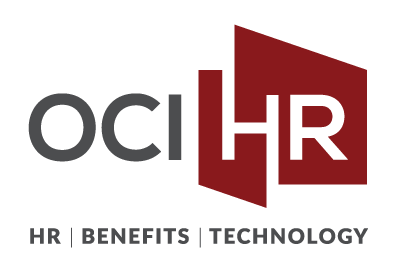If your employees are passionate about their jobs and committed to your organization, it has a direct impact on the profitability of your business. John Coldicutt explains why – and how you can drive engagement levels
Having an engaged workforce intuitively sounds like a good thing. Who wouldn’t like to go to work every day and see their employees happily getting stuck into the tasks at hand?
Engaged employees are more than just a nice-to-have. They’re also more productive, more innovative, more invested in the outcome of their work, more interested in providing a satisfying experience for customers – all of which means they’re more profitable for businesses.
Meanwhile, disengaged employees are the ones too busy texting to stock any shelves, or who are there but aren’t really there, zombie-ing their way through their days. When an employee is actively disengaged, they can become bitter and resentful, responding rudely to customers, negatively influencing other employees and actively undermining the business.
Let’s take a deeper look at why engagement is so important to business profitability, and how you can encourage deeper engagement at your workplace.
Engagement pays
CustomInsight defines employee engagement as the “extent to which employees feel passionate about their jobs, are committed to the organization, and put discretionary effort into their work”. It also goes on to clarify that “employee engagement is not the same as employee satisfaction”. Ostensibly, an employee could be satisfied with their job if it required sitting around watching Netflix and eating chocolate all day, but that wouldn’t mean they were engaged.
Forbes defines employee engagement using an emotional framework. It says: “Employee engagement is the emotional commitment the employee has to the organization and its goals. Engaged employees use discretionary effort.”
In a recent Harvard Business Review survey of leading executives, 71 per cent ranked employee engagement as critical to employee success, with 72 per cent adding that recognizing high performers had a positive impact. Of those that put a high priority on measuring employee engagement, 77 per cent found that employee engagement had an impact on customer satisfaction.
However, only 24 per cent reported employees in their organization as being engaged. Meanwhile, the Gallup Employee Engagement Insights Report concluded that 93 per cent of highly engaged employees experienced 147 per cent higher earnings than their less engaged counterparts. Those who ranked in the top half of employee engagement scores also produced 22 per cent more profit, were 21 per cent more productive, and experienced 37 per cent less absenteeism than those in the bottom half.
The business case doesn’t stop there. According to a 2014 AoN study, companies rated as great places to work had considerably higher growth and share return, while those that ranked poorly experienced the opposite.
It’s clear that employee engagement is worth investing in. But where to start? We’ve put together a comprehensive employee engagement framework (see Fig 1), as well as a list of key questions to ask your employees to help boost engagement.
Meaningful work
The first part of the framework involves creating meaningful work for employees: matching their skills to their job; making them feel they have the ability to bring about change; and making them feel like individual, creative entities – part of a team perhaps, but with autonomy in what they do.
To further your efforts in this area, you might consider asking your employees:
• Do you have the opportunity to do what you do best every day??
• Do you feel your team can take the course of action that makes the most sense for you??
• Do you feel that you can make changes at work??
• Do you feel your manager trusts you to get work done on your own?
Hands-on management
Just as you’d like your employees to be engaged, they’d like you to be engaged too – a supportive manager who cares about the outcome of their work, as well as their day-to-day happiness.
A hands-on manager will offer clear, transparent expectations. They’ll provide mentorship and will be easily accessible to employees. Perhaps most importantly, they’ll be inclusive and collaborative in decision-making. This doesn’t mean giving the vote over to the mob, but it does mean listening to employees, trying your best to incorporate their thoughts into any plans moving forward.
A few questions you might ask staff:
• Do you know exactly what’s expected of you at work?
• Do you feel that your manager cares about your personal and professional development?
• How available is your manager for meetings and catch-ups?
• Do you feel your manager asks for and values your input?
Positive environment
Unsurprisingly, a positive work environment is also key to engagement. Make sure there’s positive feedback and praise, especially when an employee has gone out on a limb and tackled something challenging. Offer work-life balance, with plenty of understanding for external demands on an employee’s time, whether that’s family or childcare, or any second job they might have. Don’t forget their need for time off to recharge and live a fully rounded life.
Ensure the workplace is an empathetic one, where employees feel listened to and cared for, no matter what’s happening in their lives. Encourage positive relationships with peers, whether that means having casual pizza Fridays, going to the pub, or simply allowing more time for chit chat.
A few questions you might ask:
• How often do you receive feedback or praise when you’re at work?
• Do you feel you can fit your personal commitments into your work schedule?
• Do you feel your manager and co-workers care about you as a person?
• Do you have a best friend at work?
Growth and opportunity
Employees are naturally more engaged when they’re regularly challenged with interesting problems, and when they feel they have the opportunity to move up. After all, no-one likes working in a dead-end job.
Provide regular training and offer on-the-job support to implement newly learned skills – and don’t neglect the horizontal skillset, so employees feel they’re growing even within the job they already have. Offer affirmation of personal development.
Encouraging peer-to-peer mentorship – support from the people that they’re working with day-to-day, who can most easily guide them – is also recommended.
A few questions to ask:
• Do you feel that you have sufficient opportunity to keep developing your professional skills at work?
• Are you encouraged to learn new skills related to your job?
• In the last six months, has someone talked to you about your progress?
• Do you feel your co-workers teach you new skills and support your growth?
customer relationships
Everything we’ve explored so far affects an employee’s relationship to their customers in impactful but roundabout ways. But actively creating positive employee-customer relationships also matters.
Employees should feel they have a personal impact on the experiences of their customers.Ideally, employees will nurture relationships with customers who return repeatedly; time should be allowed for customer engagement, rather than putting too much emphasis on efficiency.
To foster these connections, ask your employees the following questions:
• Do you feel you make a difference in the lives of your customers?
• Do you have the opportunity to develop relationships with consistent customers?
• Does your manager give you plenty of time to interact with customers?
• Do you feel like you and your customers are part of a community?
Building your business
Investing in employee engagement is of the utmost importance, as engaged employees have a direct impact on your bottom line. Make sure that you have all the tools in place to enable your employees to do what they do best on a daily basis.

